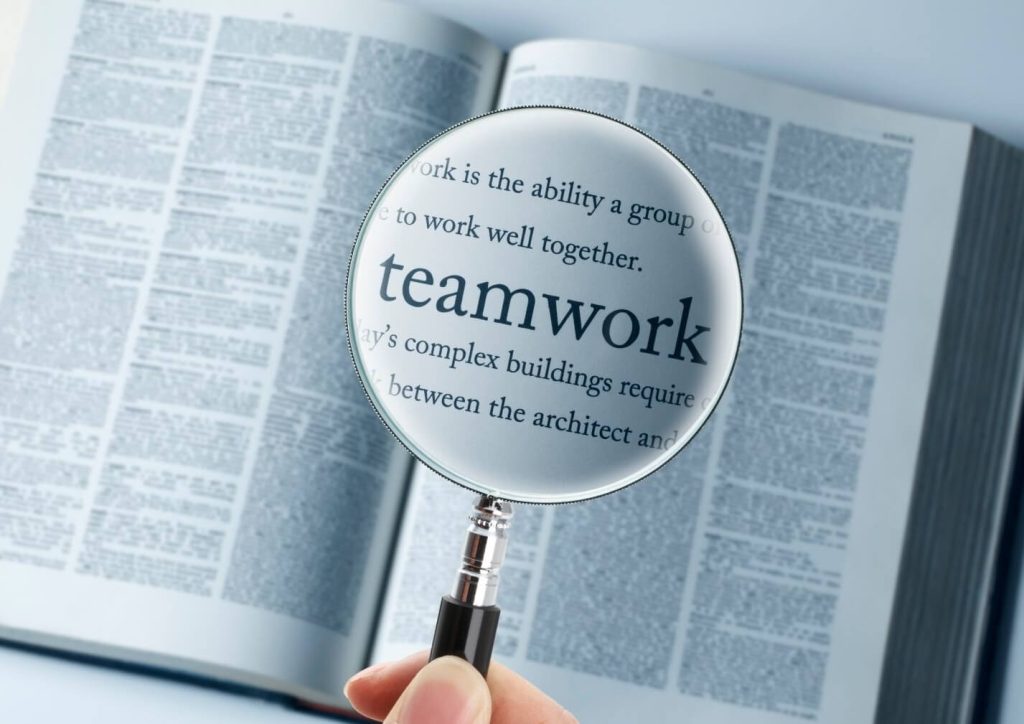The phrase “Teamwork makes the dream work” has become a popular mantra, celebrating the power of collaboration. While it highlights the importance of working together, it often oversimplifies the complexities of effective teamwork. This blog aims to unravel the myths surrounding teamwork and provide actionable strategies to help teams overcome challenges and achieve success.
The Myth of “Teamwork Makes the Dream Work”
The phrase “Teamwork makes the dream work” has been a staple in motivational speeches and workplace discussions for decades. Originating from the idea that collective efforts can achieve greater results, it has been used to inspire collaboration and unity across various contexts. Despite its popularity, the phrase often paints an overly simplistic picture of what teamwork entails.
Origins and Popularity of the Phrase
This saying gained traction as a rallying cry for group efforts, emphasizing the value of collective action. While it carries an optimistic message, it doesn’t account for the nuanced challenges that arise when diverse individuals come together to achieve a common goal.
Idealized View vs. Reality
The idealized version of teamwork assumes smooth collaboration, mutual understanding, and conflict-free progress. However, the reality is often different. Miscommunication, clashing personalities, and unclear objectives can derail even the most enthusiastic teams. For example, a team might struggle to meet deadlines if members lack clarity about their roles or if conflicts go unresolved.
When Teamwork Fails
Teamwork doesn’t always lead to success. In situations where goals are poorly defined, leadership is weak, or members fail to collaborate effectively, the dream of achieving great results can fall apart. For instance, group projects in academic settings often highlight imbalances in effort, where one or two members carry the load while others contribute minimally. Such scenarios reveal the gaps between the ideal and the reality of teamwork, underscoring the need for structure and strategy.

Understanding the Foundations of Effective Teamwork
Effective teamwork requires more than just bringing people together; it demands a solid foundation built on shared goals, clear roles, open communication, and mutual trust. These elements ensure that teams work cohesively and overcome obstacles efficiently.
Clear Goals and Vision
Successful teams start with a clear understanding of their objectives. Defining a shared vision ensures that every member aligns their efforts toward a common goal. For instance, in a product development team, having a well-articulated end goal, such as launching a new app within six months, provides direction and focus. Without this clarity, teams risk diverging efforts and losing momentum.
Roles and Responsibilities
Assigning specific roles and leveraging individual strengths are essential for efficiency. When each member understands their responsibilities, the team functions like a well-oiled machine. For example, in an event planning team, one member might focus on logistics while another handles marketing. Clear delineation of tasks prevents overlap, confusion, and missed deadlines.
Communication and Collaboration
Open communication is the backbone of any effective team. Active listening, constructive feedback, and transparent discussions foster a culture of collaboration. For instance, in a remote team, regular check-ins and clear communication channels ensure everyone stays informed and connected, minimizing misunderstandings.
Trust and Accountability
Building trust among team members creates a safe environment where ideas can flourish, and mistakes are seen as learning opportunities. Accountability further strengthens this dynamic, as members take ownership of their roles and deliverables. A team that trusts each other and holds itself accountable is better equipped to face challenges and achieve success.

Common Challenges in Teamwork and How to Overcome Them
Even the most well-intentioned teams face challenges. Recognizing and addressing these obstacles is key to maintaining productivity and harmony within the group.
Conflict and Miscommunication
Conflicts often arise from misunderstandings, clashing personalities, or differing priorities. Miscommunication, whether due to unclear instructions or assumptions, can amplify these issues. To resolve conflicts, teams must adopt strategies like active listening, mediation, and open discussions to address grievances constructively. For example, setting clear communication guidelines can help prevent confusion and keep discussions focused.
Unequal Contribution
A common complaint in team settings is the uneven distribution of work, where some members feel overburdened while others contribute minimally. This imbalance not only hampers productivity but also fosters resentment. To address this, teams can implement regular progress checks and ensure that tasks are distributed fairly based on skills and availability. Recognizing and rewarding contributions also helps maintain motivation and balance.
Lack of Engagement
Disengaged team members can slow progress and negatively affect morale. Reasons for disengagement may include unclear goals, lack of recognition, or mismatched interests. Strategies to re-engage team members include offering meaningful roles, providing regular feedback, and fostering a supportive environment where everyone feels valued.
Cultural and Personality Differences
Diversity in teams is a strength, but it can also lead to misunderstandings if not managed effectively. Cultural backgrounds, communication styles, and personality traits can create friction. Teams must prioritize inclusivity and adaptability, finding common ground through shared goals and open dialogue. Encouraging mutual respect and understanding can turn differences into assets, fostering creativity and innovation.

Teamwork Strategies for Success
Effective teamwork requires deliberate strategies to create a productive and cohesive environment. By focusing on building a strong culture, setting clear goals, encouraging creativity, and leveraging the right tools, teams can overcome obstacles and achieve their objectives.
Building a Strong Team Culture
A strong team culture is built on mutual respect, shared values, and open communication. When team members feel respected and valued, they are more likely to collaborate effectively and contribute their best efforts. Leaders play a crucial role in fostering this culture by modeling positive behaviors, encouraging inclusivity, and addressing conflicts constructively.
Setting SMART Goals
Setting goals that are Specific, Measurable, Achievable, Relevant, and Time-bound (SMART) provides teams with a clear roadmap for success. For example, a marketing team aiming to increase social media engagement might set a SMART goal to achieve a 20% rise in followers within three months. These structured objectives help align efforts, track progress, and maintain motivation.
Encouraging Innovation and Creativity
An environment that welcomes new ideas fosters innovation and problem-solving. Encouraging brainstorming sessions, offering constructive feedback, and creating a safe space for experimentation are key strategies. For instance, tech companies often dedicate time to “innovation days,” allowing employees to explore creative solutions without fear of failure.
Leveraging Technology
The right tools can enhance collaboration and productivity, especially in remote or hybrid teams. Platforms like Slack, Microsoft Teams, and Asana streamline communication, task management, and project tracking. Video conferencing tools enable virtual brainstorming sessions, keeping teams connected regardless of location.
Celebrating Successes and Learning from Failures
Recognizing achievements boosts morale and motivates teams to aim higher. Celebrating both individual and group successes reinforces a sense of accomplishment and unity. Equally important is the ability to learn from setbacks. Teams that view failures as opportunities for growth are better equipped to adapt and improve over time.

Real-World Examples of Effective Teamwork
Case Study 1: Sports Team Collaboration
The 2019 FIFA Women’s World Cup-winning US team demonstrated exceptional teamwork by combining individual talent with collective strategy. Clear roles, effective communication, and trust among players were pivotal in their success, showcasing the power of alignment toward a shared goal.
Case Study 2: Healthcare Teams During a Pandemic
During the COVID-19 pandemic, multidisciplinary healthcare teams worked together to save lives under extreme pressure. Collaboration between doctors, nurses, and support staff, supported by strong leadership and adaptability, ensured efficient care delivery despite unprecedented challenges.
Case Study 3: Business Innovation in Tech
Google’s Project Aristotle highlighted that psychological safety—the belief that team members can take risks without fear of judgment—was a key factor in team success. Teams with high psychological safety consistently outperformed others, demonstrating the importance of creating a supportive environment.
These examples illustrate that successful teamwork is not about the absence of challenges but about addressing them with effective strategies and strong collaboration.
The Role of Leadership in Teamwork
Leadership is a cornerstone of effective teamwork, shaping the team’s direction, culture, and resilience. Great leaders inspire and empower their teams while navigating challenges with skill and empathy.
Leadership Styles that Foster Team Success
Certain leadership styles are particularly effective in team settings. Collaborative leaders prioritize participation and shared decision-making, ensuring that every team member feels valued. Transformational leaders inspire innovation and motivate their teams to exceed expectations, while servant leaders focus on the needs of their team members, fostering trust and support.
Empowering Team Members
Empowerment involves striking a balance between autonomy and guidance. Leaders can delegate tasks while providing the necessary resources and support, encouraging team members to take ownership of their roles. For example, assigning a team member to lead a project not only boosts their confidence but also enhances overall accountability within the team.
Navigating Challenges as a Leader
Conflicts, underperformance, and morale issues are inevitable in team dynamics. Effective leaders address these challenges proactively, using mediation techniques to resolve conflicts and offering constructive feedback to improve performance. Maintaining team morale requires consistent communication, recognition of efforts, and adaptability in the face of obstacles.
Conclusion
Teamwork, while not a guaranteed path to success, becomes a powerful tool when approached thoughtfully. By addressing challenges and implementing effective strategies, teams can achieve their goals with greater efficiency and harmony. Rethink your approach to teamwork, embrace continuous improvement, and foster collaboration to unlock the full potential of working together.
